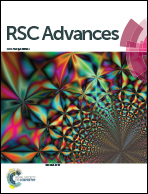Biochemical characterization and biocatalytic application of a novel d-tagatose 3-epimerase from Sinorhizobium sp.†
Abstract
Sinorhizobium sp. D-tagatose 3-epimerase (sDTE) catalyzes the conversion of D-tagatose to D-sorbose. It also recognizes D-fructose as a substrate for D-allulose production. The optimal temperature and pH of the purified sDTE was 50 °C and 8.0, respectively. Based on the sDTE homologous model, Glu154, Asp187, Gln213, and Glu248, form a hydrogen bond network with the active-site Mn2+ and constitute the catalytic tetrad. The amino acid residues around O-1, -2, and -3 atoms of the substrates (D-tagatose/D-fructose) are strictly conserved and thus likely regulate the catalytic reaction. However, the residues at O-4, -5, and -6, being responsible for the substrate-binding, are different. In particular, Arg65 and Met9 were found to form a unique interaction with O-4 of D-fructose and D-tagatose. The whole cells with recombinant sDTE showed a higher bioconversion rate of 42.5% in a fed-batch bioconversion using D-fructose as a substrate, corresponding to a production of 476 g L−1 D-allulose. These results suggest that sDTE is a potential industrial biocatalyst for the production of D-allulose in fed-batch mode.



 Please wait while we load your content...
Please wait while we load your content...